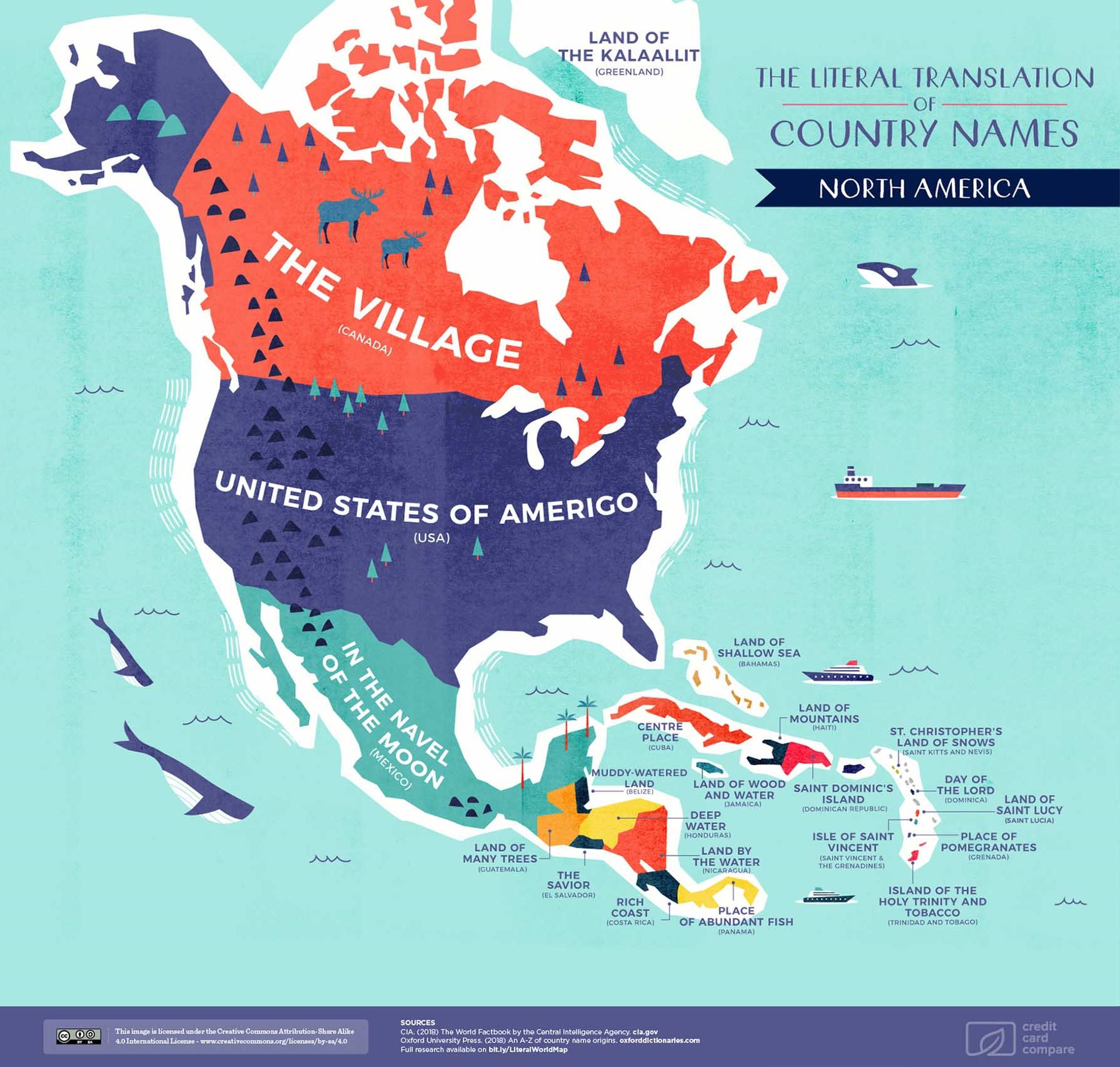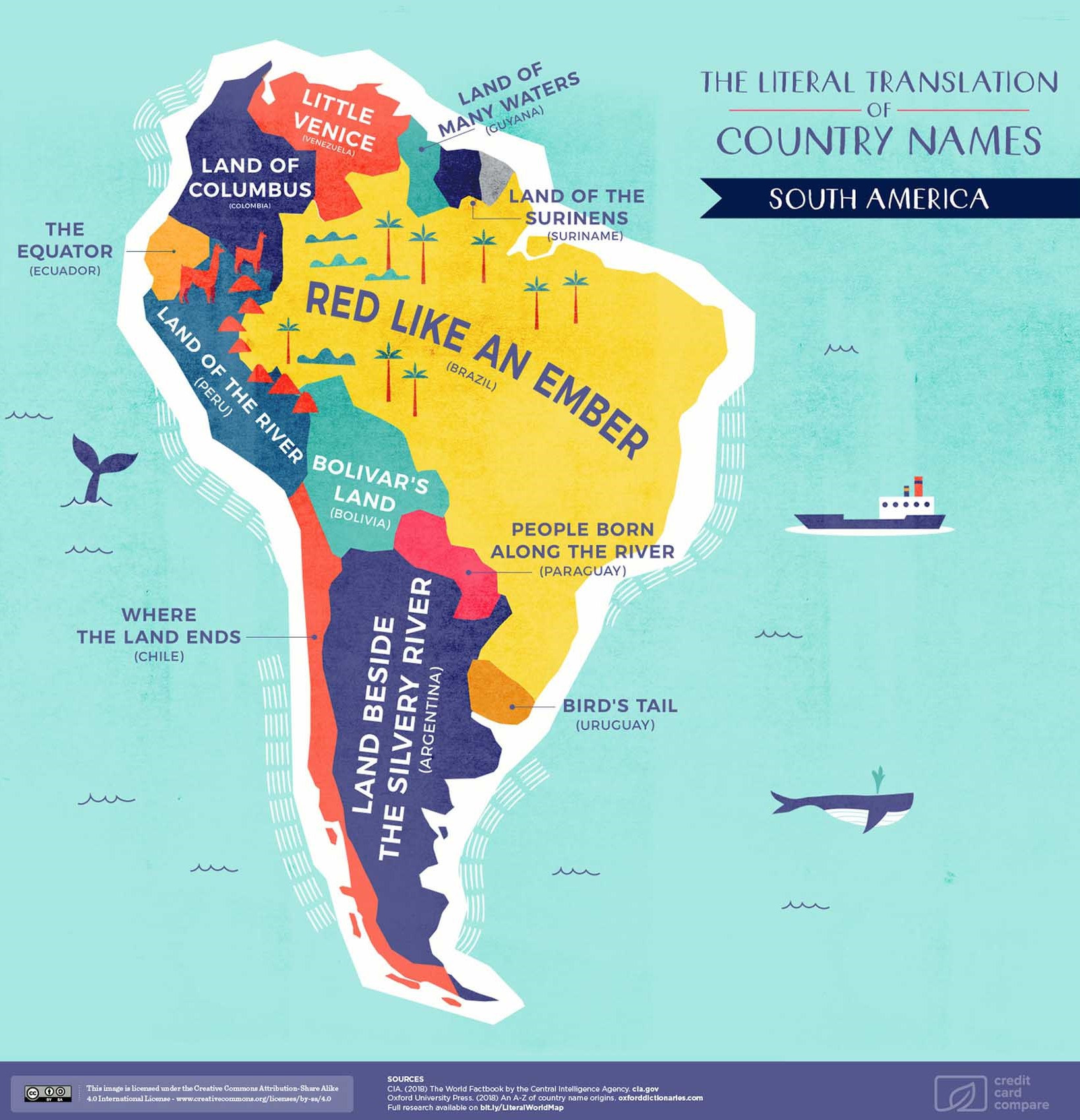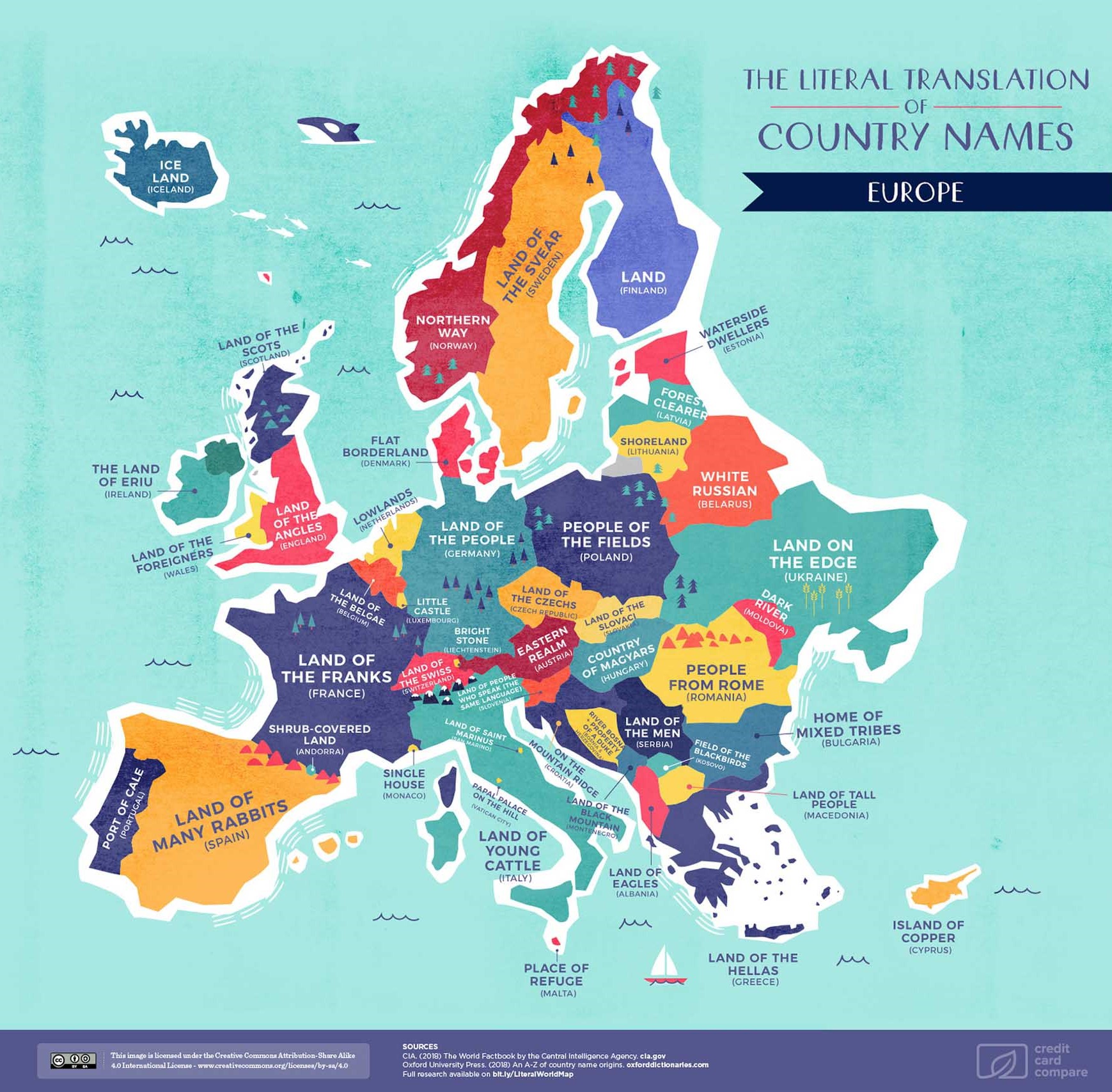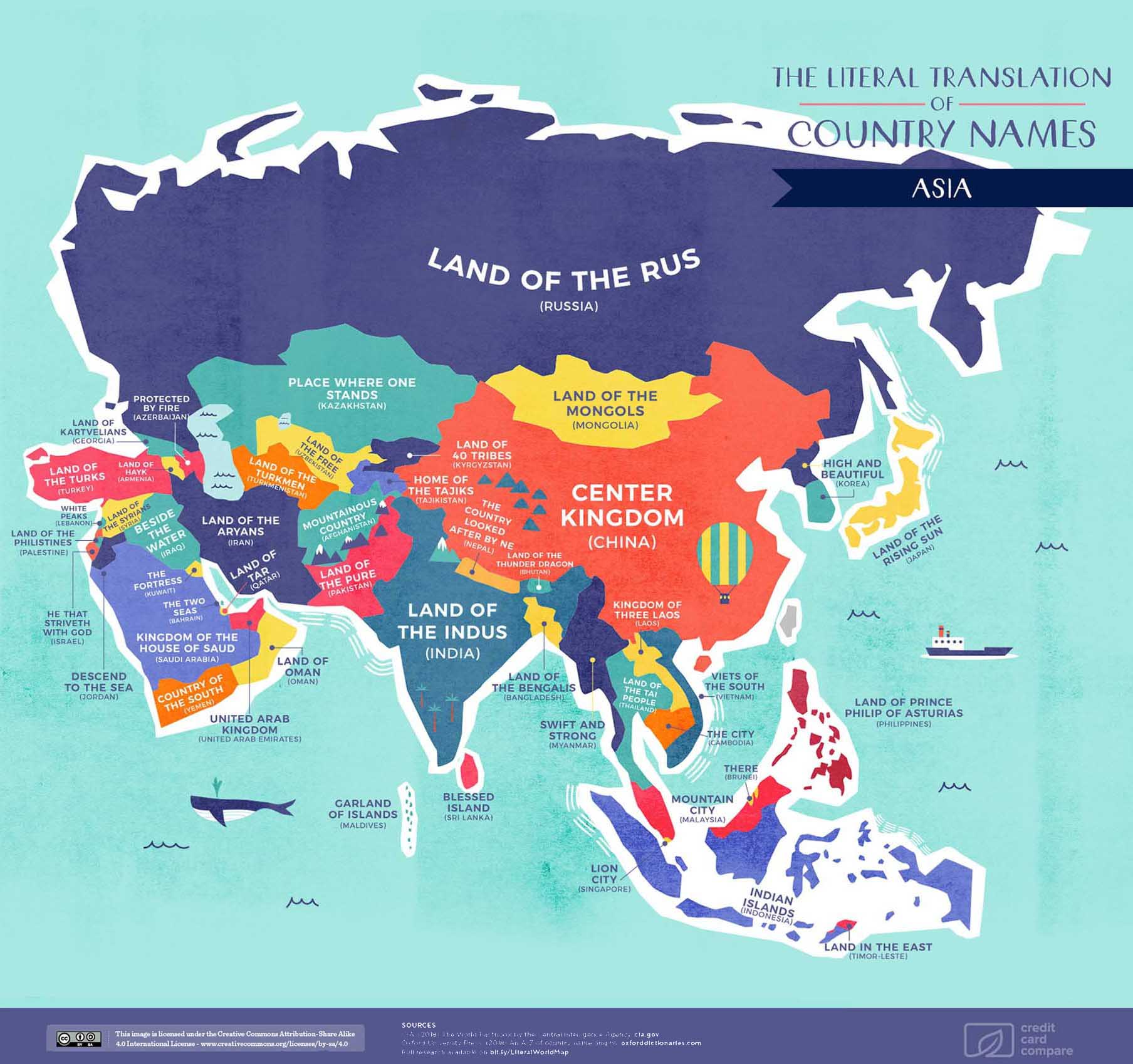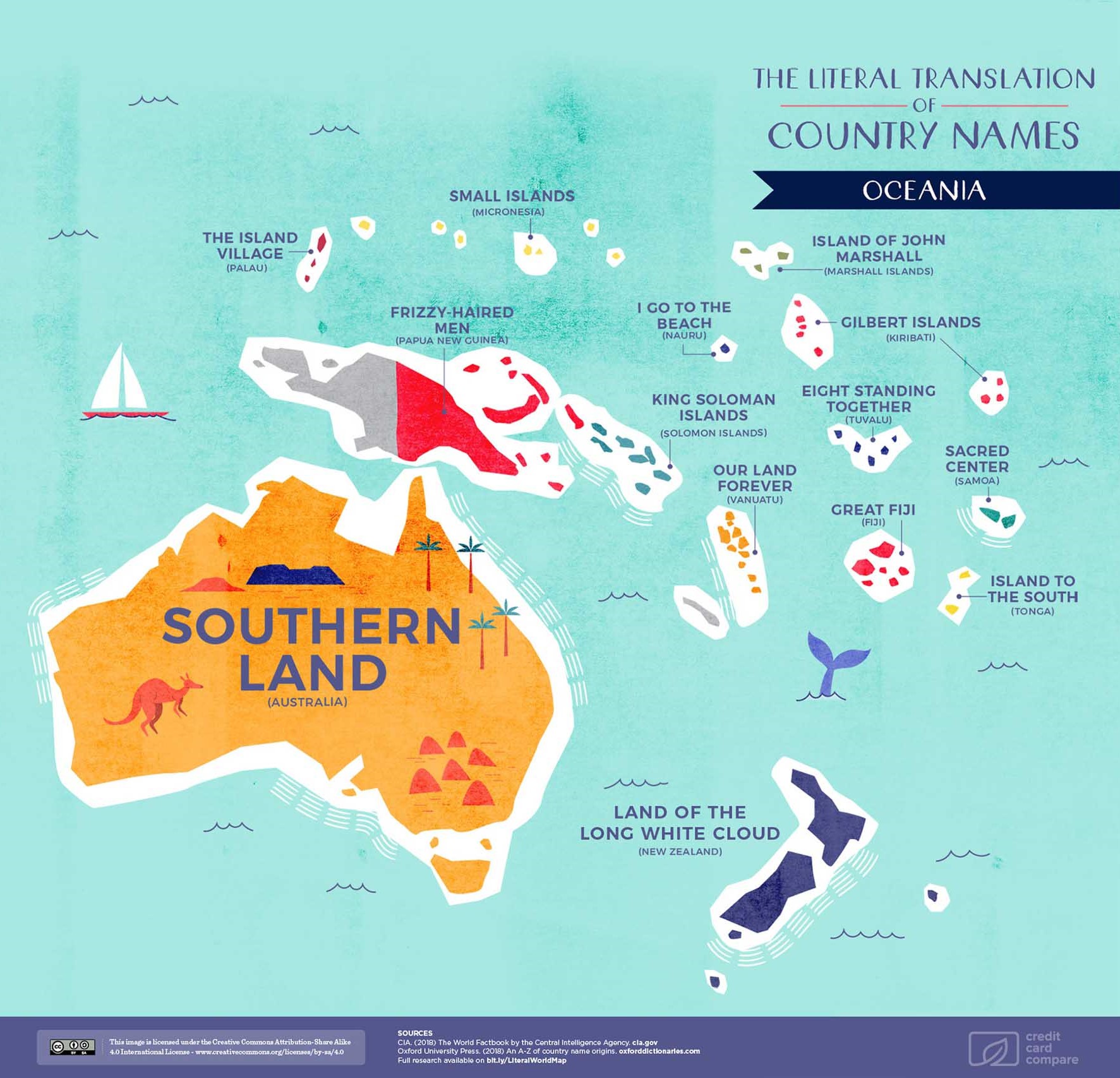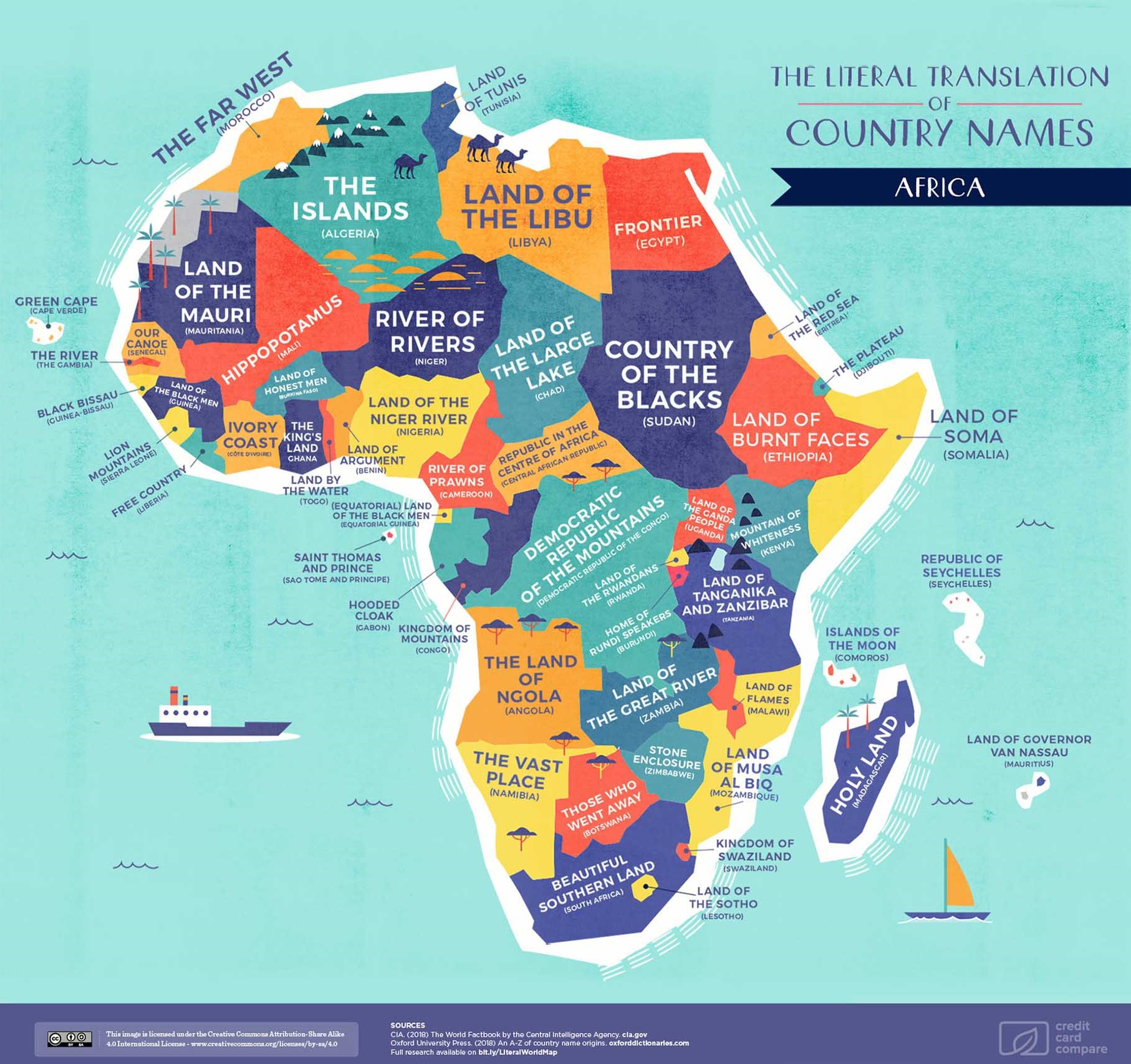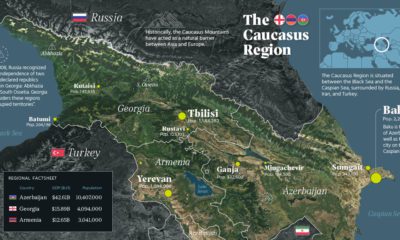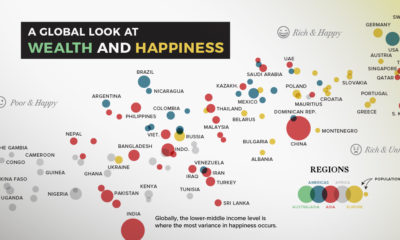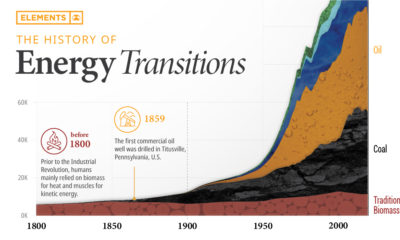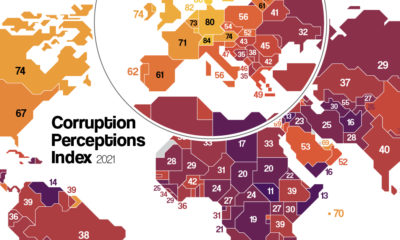These days, planes, trains, and automobiles can deliver us to any destination we can name. But how often can we say we know the origins of those names? Today’s map comes to us courtesy of Credit Card Compare, and it visualizes the literal translations of every country’s name, arranged by continent. Of course, naming conventions are always layered and open to interpretation — especially when they’ve gone through multiple levels of translation — but it’s still an interesting exercise to trace where they are thought to come from.
North America
Starting with the Great White North, Canada’s name is derived from the Indigenous Huron people. Kanata means village, or settlement, in the Iroquoian language. Meanwhile, The United States of America was named in honor of the Italian explorer Amerigo Vespucci. Vespucci is credited with correcting Columbus’ error, in which the latter mistook the New World for the East Indies. Finally, Mexico comes from the simplified Spanish translation for the Aztec capital, Metztlixihtlico, which is said to mean “place at the center of the moon”. The word is a blend of mētztli for ‘moon’, xictli for ‘navel’ or ‘centre’, and the suffix -co for ‘place’.
South America
Brazil’s name is actually shortened from Terra do Brasil (land of Brazil). The brazilwood tree, or pau-brasil, was valued highly in the early 16th century. It was used to produce red dyes for the European textile industry — hence the “red like an ember” moniker. Uruguay has a couple of meanings attached to it, the first being “Bird’s Tail” in reference to the uru, a type of quail that lived by the river. Another association is the uruguä, a species of mussel, for which the country is named “River of Shellfish”. It’s interesting to note the relationship to water and rivers, which is reflected in the similarly-themed naming history across the continent. Venezuela is named for its resemblance to the Italian city of Venice, thus gaining the title of “Little Venice”. Another area also named after European cities? Colombia, which was originally named “New Granada” in a hat tip to the capital of the Spanish province.
Europe
The “Land of the Franks”, France, gets its namesake from the Latin word francia. This dates back even further to the Old German word franka, meaning brave, or fierce. There’s also a political angle to the name: King Louis V famously proclaimed that “France signifies freedom”. The exact origin for Germany is unknown, possibly because it was composed of various tribes and states before 1871. It’s known as Deutschland (for “of the people”) in German, Alemania in Spanish, Niemcy in Polish, and Saksa in Finnish. Another theory ties it with the Celtic word ‘gair’ for neighbor. By the Mediterranean, the boot-shaped country of Italy gets its name from the symbol of the Southern Italic Vitali tribe: the bull. The name is connected to the Latin vitulus for ‘calf’ or ‘sons of the bull’. Another interpretation is the phrase diovi-telia, which translates to “land of the light”.
Asia
China’s English name comes from the Qin dynasty, the first unified and multinational state in Chinese history. Although the dynasty only existed between 221-207 BC, it had a profound and lasting influence on the country. A fascinating tidbit is that China’s name in fact borrows from the Persian language, and even Sanskrit. India’s name comes from Greek, but also the Sanskrit Síndhu, where both refer to the Indus River. Bharat is another official and historically significant name for the Republic of India, and Hindustan is an alternative name for the region, but its use depends on context and language.
Oceania
The Land Down Under of Australia is fairly geographical in its name, drawn from the Latin australis for “southern”. The explorer Matthew Flinders popularized the name as we know it in 1804, and “Australia” replaced “New Holland” as the official continent. The Māori name for New Zealand is Aotearoa, which is most commonly defined as “the long white cloud” — a reference to early Polynesian navigators discovering the country by relying on cloud formations.
Africa
The name Egypt comes from the Ancient Greek Aiguptos and Latin Ægyptus, and is also derived from hūt-kā-ptah (Temple of the Soul of Ptah). The ancient Egyptian name for the country was km.t (pronounced “kemet”), meaning “black land” likely for the fertile soils of the Nile valley. Today, Egypt’s official name is Jumhūrīyat Miṣr al-ʻArabīyah, or “Arab Republic of Egypt”. South Africa is aptly named for its geographical location. Interestingly, however, the country has different names in the country’s 11 official languages, including English, Afrikaans, the Venda language, the Tsonga language, and the Nguni and Sotho languages. What rich histories can be uncovered from your country’s name? Note: Where some of the country names on the individual maps vary from the translations, please consult the original research document which include the English translations and explanations behind the etymology. on Even while political regimes across these countries have changed over time, they’ve largely followed a few different types of governance. Today, every country can ultimately be classified into just nine broad forms of government systems. This map by Truman Du uses information from Wikipedia to map the government systems that rule the world today.
Countries By Type of Government
It’s important to note that this map charts government systems according to each country’s legal framework. Many countries have constitutions stating their de jure or legally recognized system of government, but their de facto or realized form of governance may be quite different. Here is a list of the stated government system of UN member states and observers as of January 2023: Let’s take a closer look at some of these systems.
Monarchies
Brought back into the spotlight after the death of Queen Elizabeth II of England in September 2022, this form of government has a single ruler. They carry titles from king and queen to sultan or emperor, and their government systems can be further divided into three modern types: constitutional, semi-constitutional, and absolute. A constitutional monarchy sees the monarch act as head of state within the parameters of a constitution, giving them little to no real power. For example, King Charles III is the head of 15 Commonwealth nations including Canada and Australia. However, each has their own head of government. On the other hand, a semi-constitutional monarchy lets the monarch or ruling royal family retain substantial political powers, as is the case in Jordan and Morocco. However, their monarchs still rule the country according to a democratic constitution and in concert with other institutions. Finally, an absolute monarchy is most like the monarchies of old, where the ruler has full power over governance, with modern examples including Saudi Arabia and Vatican City.
Republics
Unlike monarchies, the people hold the power in a republic government system, directly electing representatives to form government. Again, there are multiple types of modern republic governments: presidential, semi-presidential, and parliamentary. The presidential republic could be considered a direct progression from monarchies. This system has a strong and independent chief executive with extensive powers when it comes to domestic affairs and foreign policy. An example of this is the United States, where the President is both the head of state and the head of government. In a semi-presidential republic, the president is the head of state and has some executive powers that are independent of the legislature. However, the prime minister (or chancellor or equivalent title) is the head of government, responsible to the legislature along with the cabinet. Russia is a classic example of this type of government. The last type of republic system is parliamentary. In this system, the president is a figurehead, while the head of government holds real power and is validated by and accountable to the parliament. This type of system can be seen in Germany, Italy, and India and is akin to constitutional monarchies. It’s also important to point out that some parliamentary republic systems operate slightly differently. For example in South Africa, the president is both the head of state and government, but is elected directly by the legislature. This leaves them (and their ministries) potentially subject to parliamentary confidence.
One-Party State
Many of the systems above involve multiple political parties vying to rule and govern their respective countries. In a one-party state, also called a single-party state or single-party system, only one political party has the right to form government. All other political parties are either outlawed or only allowed limited participation in elections. In this system, a country’s head of state and head of government can be executive or ceremonial but political power is constitutionally linked to a single political movement. China is the most well-known example of this government system, with the General Secretary of the Communist Party of China ruling as the de facto leader since 1989.
Provisional
The final form of government is a provisional government formed as an interim or transitional government. In this system, an emergency governmental body is created to manage political transitions after the collapse of a government, or when a new state is formed. Often these evolve into fully constitutionalized systems, but sometimes they hold power for longer than expected. Some examples of countries that are considered provisional include Libya, Burkina Faso, and Chad.
